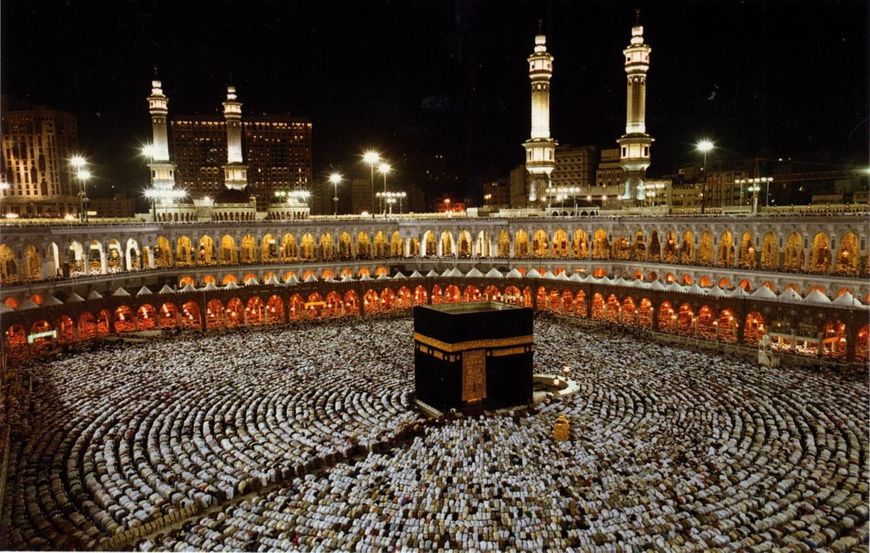The Journey of Hajj: From Prophet Ibrahim’s Legacy to Today’s Pilgrimage |
 |
 |
|
Hajj, the sacred pilgrimage to Mecca, is a cornerstone of Islam, drawing millions of Muslims annually. This pilgrimage, deeply embedded in religious tradition, traces its roots back to the Prophet Ibrahim (Abraham) and has evolved over centuries to become one of the largest annual gatherings in the world. Understanding the history of Hajj provides insight into its spiritual significance, its connection to Islamic history, and its development through modern times. Read more about Islamic traditions on the Yantar.ae blog. Origins of Hajj: The Time of Prophet IbrahimThe story of Hajj begins with the Prophet Ibrahim, revered as a patriarch in Islam, Christianity, and Judaism. According to Islamic tradition, Ibrahim, under divine command, left his wife Hajar and their infant son Ismail in the barren valley of Mecca. When their provisions ran out, Hajar desperately searched for water, running between the hills of Safa and Marwa. In her distress, an angel revealed the Zamzam well, which continues to provide water to pilgrims today. Years later, Allah commanded Ibrahim to build the Kaaba, the house of worship, with the help of Ismail. After its completion, Ibrahim was instructed to invite people from all corners of the earth to make a pilgrimage to this sacred site. The Kaaba became the focal point of worship and the center of the Hajj rituals that millions follow today. Hajj in the Time of Prophet MuhammadWhile the foundation of Hajj was laid during Prophet Ibrahim’s time, the pilgrimage rituals as they are known today were solidified during the era of Prophet Muhammad (peace be upon him). Before Islam, Mecca was a bustling trade center, and the Kaaba was surrounded by idols that were worshiped by various tribes. The annual pilgrimage existed but had lost much of its monotheistic essence. In 630 CE, Prophet Muhammad led his followers to Mecca in what is known as the "Farewell Hajj." During this pilgrimage, he restored the sanctity of the Kaaba, cleansing it of idols, and taught his followers the proper rituals of Hajj, which would be followed by Muslims for generations to come. He also delivered his Farewell Sermon, emphasizing unity, equality, and justice, principles that continue to resonate with Muslims worldwide. The Rituals of HajjThe core rituals of Hajj, as practiced today, remain deeply rooted in the actions of Prophet Ibrahim and Prophet Muhammad. These include:
The Evolution of Hajj Through HistoryThroughout the early centuries of Islam, Hajj remained a key pillar of the faith, with caliphs and rulers making significant efforts to maintain and expand the pilgrimage infrastructure. Roads were constructed, and security was provided to protect pilgrims on their long journeys across deserts and seas. Caravan routes from across the Islamic empire converged on Mecca, with some traveling for months to fulfill their religious obligation. During the Abbasid Caliphate, the pilgrimage grew in scale, with rulers enhancing the facilities in Mecca and Medina. The Kaaba was frequently repaired and restored to ensure it could accommodate the growing number of pilgrims. By the medieval period, Hajj had become a global event. Muslim travelers from regions as far as Andalusia (modern-day Spain) and the Far East made the pilgrimage, often facing arduous journeys. The pilgrimage was also a site of cultural exchange, as pilgrims brought with them their traditions, ideas, and goods from distant lands. Hajj in Modern TimesThe 20th century marked a significant transformation in the history of Hajj. The advent of air travel revolutionized the pilgrimage, making it more accessible to Muslims from all corners of the world. What once took months now takes hours, leading to a dramatic increase in the number of pilgrims each year. In 2023, over 2.5 million Muslims performed Hajj. Saudi Arabia, as the custodian of the two holy mosques, has undertaken extensive infrastructure projects to accommodate the growing numbers of pilgrims. Massive expansions of the Grand Mosque in Mecca, sophisticated crowd control measures, and the introduction of modern amenities have helped ensure the safety and comfort of the millions who attend. In addition to these physical developments, the Saudi government has introduced digital solutions, such as the Hajj Smart ID, to streamline the pilgrimage experience. These technological advancements have significantly reduced the logistical challenges once associated with Hajj. Despite these modern innovations, the essence of Hajj remains unchanged. Pilgrims still seek spiritual purification, forgiveness, and a deep connection with Allah, following in the footsteps of Prophet Ibrahim and Prophet Muhammad. Hajj is not just a journey of physical travel but a profound spiritual experience that connects Muslims with their faith and history. From the ancient rituals established by Prophet Ibrahim to the global event it is today, Hajj remains a symbol of unity, equality, and devotion. As the pilgrimage continues to evolve in the modern era, its spiritual significance endures, serving as a reminder of the eternal bond between the Creator and His creation.
|
|
|


